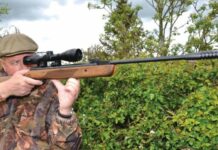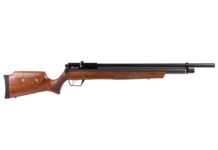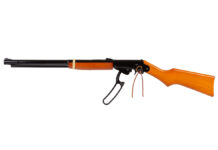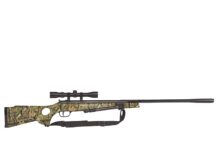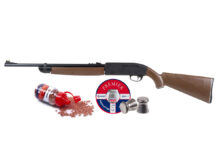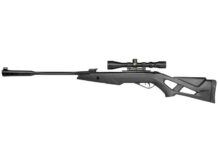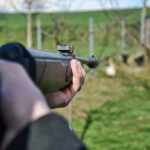“Exploring the Enigma: Unraveling the Mystery Behind Deer Antlers’ Points. Delve into the fascinating realm of deer antlers as we unravel their purpose, growth patterns, and unique characteristics. From evolutionary advantages to behavioral cues, discover the hidden secrets behind these magnificent natural formations.”
Table of Contents
- 1. “Understanding the Points on Deer Antlers: A Guide for Wildlife Enthusiasts”
- 2. “Decoding the Mystery: How to Count Points on Deer Antlers”
- 3. “Exploring the Fascinating World of Deer Antler Points”
- 4. “Demystifying Deer Antler Points: What You Need to Know”
- 5. “Unveiling the Secrets of Deer Antler Points: A Comprehensive Overview”
- 6. “Counting the Points: An In-Depth Look at Deer Antlers”
1. “Understanding the Points on Deer Antlers: A Guide for Wildlife Enthusiasts”

Deer antlers, with their impressive points and branching structure, have long fascinated wildlife enthusiasts. Understanding the significance of these points can provide valuable insights into the health and age of a deer.
The Significance of Points
Points are tines that branch off the main beam of a deer’s antler. These points are measured based on their length, with any tine measuring at least 1 inch being considered a point. The number of points on a deer’s antler can vary greatly, ranging from as few as two to as many as 14 or more.
The number of points on a deer’s antlers is not necessarily an indication of its age. Instead, it is more closely related to the overall health and genetics of the animal. Older bucks tend to have larger and more branched antlers, but this is not always the case.
Counting Points
When describing white-tailed bucks, hunters often refer to them by the number of points they have. For example, an eight-point buck would have four points on each side of its antlers. However, it is important to note that counting points alone does not provide a complete picture of an animal’s size or quality.
In addition to counting points, hunters also consider other attributes when scoring an animal, such as the spread (the width between the tips of the antlers), the length of the main beam, and the length of each point. These measurements help determine the overall size and quality of a deer’s antlers.
Understanding how to count and interpret points on deer antlers can enhance your appreciation for these majestic creatures and their unique characteristics. By observing these features in wildlife habitats or through photographs, you can gain valuable insights into the health and age of the deer population in your area.
2. “Decoding the Mystery: How to Count Points on Deer Antlers”
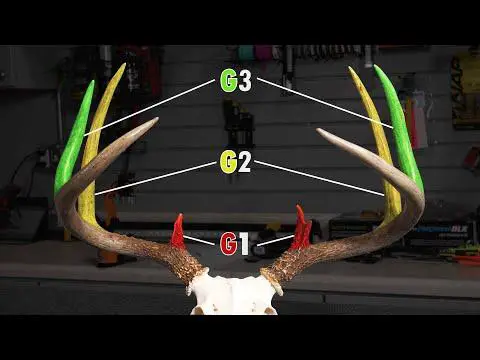
When it comes to deer antlers, counting points can be a bit of a mystery for some people. But fear not, we are here to help you decode the process!
To start, points are the tines that branch off from the main beam of the antler. In order for a point to be counted, it must measure at least 1 inch in length. These points can vary in number and shape, making each set of antlers unique.
When describing white-tailed bucks or bull elk, hunters often use the number of points as a way to identify and classify them. For example, an eight-point buck is one that has eight tines branching off its main beam. This is the most common type of antler for white-tailed deer.
It’s important to note that counting points may not always give an accurate indication of an animal’s age. While younger deer and elk typically have fewer points, older animals may have smaller and less dense antlers. The health and fitness of an animal can be better determined by examining the size and overall quality of their antlers.
In addition to counting points, hunters also consider other attributes when scoring an animal’s antlers. These include measurements such as spread (the width between the two main beams), main beam length, and length of individual points.
For elk specifically, each side is counted separately when describing their antlers. So if both sides have six points, they would be referred to as a 6×6 bull elk.
Moose antlers are measured differently than deer or elk. The most common measure of size for moose is spread – which refers to the total width between the two main beams. Other measurements taken into account include the number of points, width and length of the palm (central part of the antler), and circumference of the beam at its narrowest point.
So, the next time you come across a set of deer antlers, you’ll have a better understanding of how to count the points and appreciate the unique characteristics they possess.
3. “Exploring the Fascinating World of Deer Antler Points”
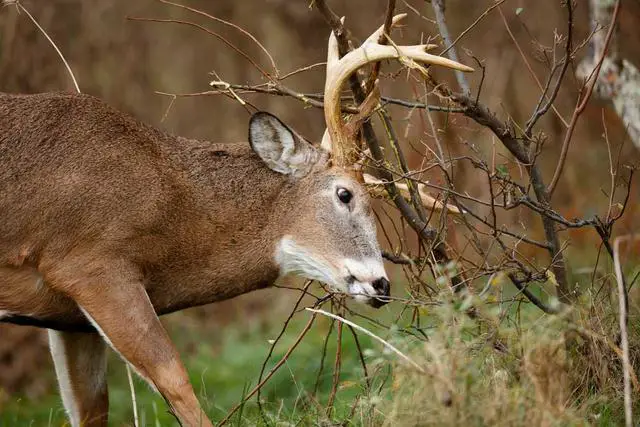
Antler points are a fascinating aspect of deer antlers that capture the attention of wildlife enthusiasts and hunters alike. These points, also known as tines, are the branches that extend from the main beam of the antler. They can vary in number and shape, creating unique characteristics for each individual deer.
The Significance of Antler Points
Antler points serve multiple purposes for deer. They are used as weapons during the breeding season, or rut, when males compete for dominance and mating rights. The number and size of antler points can indicate the strength and fitness of a buck, making them an important factor in determining which males are successful in securing mates.
Additionally, antler points can be used to estimate the age of young bucks. Yearling deer typically have spikes instead of branched antlers, which gradually develop into more complex structures as they mature. However, using antlers alone to determine age is not always reliable, as other factors such as genetics and nutrition can influence their growth.
Differentiating Antler Points
When describing deer antlers, hunters often refer to the number of points present on each side. For example, an eight-point buck would have four tines on each side of its antlers. This method allows for easy comparison and classification among different individuals.
In addition to counting points, hunters may also measure other attributes of the antlers to score an animal’s trophy potential. This includes measuring the spread (width between the two main beams), length of main beam, and length of individual points. These measurements help determine the overall size and quality of a buck’s antlers.
Understanding these aspects of deer antler points adds depth to our appreciation for these magnificent natural structures. Whether you’re a wildlife enthusiast or a hunter seeking a trophy buck, exploring the world of antler points offers a deeper understanding of deer behavior and the unique characteristics that make each individual deer truly remarkable.
4. “Demystifying Deer Antler Points: What You Need to Know”
Deer antler points can be a source of fascination and intrigue for many people. They are often used as a way to measure the size and maturity of a deer, but understanding how to count points can be confusing. Here are some key points to help demystify deer antler points:
1. Points are tines branching off the main beam
Points on deer antlers refer to the tines that branch off from the main beam of the antler. These tines must measure at least 1 inch in length to be considered as points.
2. Additional attributes can be measured for scoring
In addition to counting points, hunters may also measure other attributes of the antlers to score an animal. This includes measuring the spread (width between the tips of the antlers), main beam length, and length of individual points.
3. Different counting methods for different species
When it comes to counting points, there are different methods depending on the species of deer. For white-tailed deer, they are typically described by their total number of points. The most common type is an eight-point buck, which refers to a deer with four tines on each side.
On the other hand, elk are counted by each side of their antlers. For example, a mature elk with six points on both sides would be referred to as a 6×6 bull.
4. Age does not always determine antler size
While it is commonly believed that older deer will have larger antlers, this is not always the case. Antler size is more influenced by an animal’s overall health and genetics rather than its age alone. Deer, elk, and moose past their prime years may actually have smaller and less dense antlers.
Understanding how to count and interpret deer antler points can provide valuable insights into the size and maturity of an animal. However, it is important to remember that antlers are just one aspect of an animal’s overall health and fitness.
5. “Unveiling the Secrets of Deer Antler Points: A Comprehensive Overview”

The Importance of Antler Points
Antler points are tines that branch off the main beam of a deer’s antlers and are often used to describe and measure the size and quality of the antlers. These points are an important indicator of the health and fitness of the animal rather than its age. While antlers can vary in size and shape, the number of points can provide valuable information about the overall condition of the deer. Hunters often use these points to determine whether a buck is mature enough to harvest or if it should be allowed to continue growing.
Counting Points on White-Tailed Deer
When describing white-tailed bucks, hunters commonly refer to them by their number of points. The most common antler type for white-tailed deer is eight points, which refers to eight tines branching off each side of the main beam. However, it’s important to note that counting points alone may not provide a complete picture of a buck’s size or quality. Other attributes such as spread (the width between antlers), main beam length, and length of points are also considered when scoring an animal.
Counting Points on Elk and Moose
Unlike white-tailed deer, elk are counted by each side when referring to their antler points. For example, a mature elk with six tines branching off each side would be referred to as a 6×6. Moose, on the other hand, are primarily measured by their spread, which is the total width between their antlers. Additional measurements for moose include the number of points, width and length of palm (central part of antler), and circumference of beam at its narrowest point.
Overall, understanding how to count and interpret antler points can provide valuable insights into the size, quality, and overall health of deer, elk, and moose populations. This knowledge is essential for wildlife management and conservation efforts.
6. “Counting the Points: An In-Depth Look at Deer Antlers”
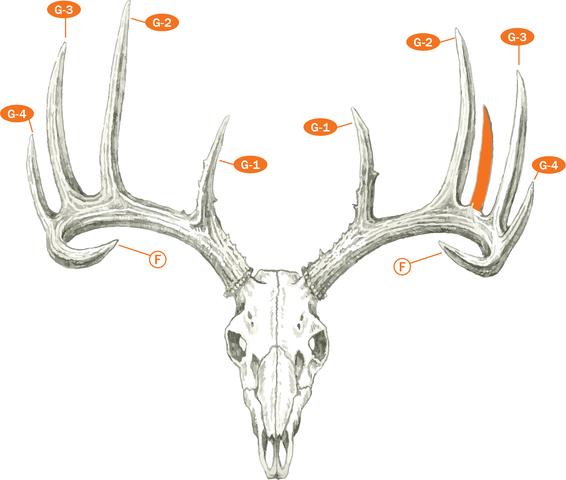
Antlers are a fascinating feature of animals in the deer family, and counting the points on these antlers can provide valuable insights into their age and health. When it comes to white-tailed bucks and bull elk, the number of points refers to the tines branching off the main beam of the antler that measure at least 1 inch. Eight points is the most common antler type for white-tailed deer, typically found on 3 or 4 year-old bucks, as well as aging bucks and those living in poor habitats.
Elk, on the other hand, are counted by each side of their antlers. The most common mature elk antlers have six points on both the left and right sides, resulting in a classification of “6×6.” This measurement system allows hunters and wildlife enthusiasts to assess an elk’s size and maturity based on its antler configuration.
For moose, size is primarily measured by spread, which refers to the total width of their antlers. Additionally, moose antler scoring takes into account other factors such as points, palm width, palm length, and circumference of beam at its narrowest point. The palm is the central part of the moose’s antler that resembles an outstretched hand.
Understanding how to count points on deer antlers provides valuable information about an animal’s age and overall health. It allows researchers and wildlife managers to monitor populations and make informed decisions regarding conservation efforts. So next time you come across a majestic set of antlers in nature or hear someone discussing them, you’ll have a better understanding of what those points signify.
In conclusion, deer antlers serve various purposes in the animal kingdom, including attracting mates, defending against predators, and establishing dominance within their social hierarchy. Understanding the different points on deer antlers provides valuable insights into their behavior and evolutionary adaptations. Further research is needed to delve deeper into this fascinating aspect of deer biology and its implications for conservation efforts.




